Tradition, prayer, reverence and music marked the Feast Day of Our Lady of Guadalupe, Patroness of the Americas, throughout the Diocese of Venice.
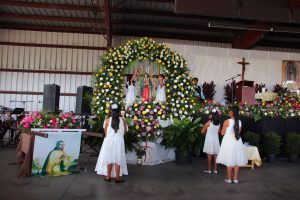 Celebrated on Dec. 12, the Feast is often linked to the Dec. 9 Feast of St. Juan Diego, the day in 1531 when Our Lady first appeared to the saint near modern day Mexico City.
Celebrated on Dec. 12, the Feast is often linked to the Dec. 9 Feast of St. Juan Diego, the day in 1531 when Our Lady first appeared to the saint near modern day Mexico City.
Parishes throughout the Diocese celebrated this special day with a variety of events including Masses, overnight vigils, large processions, early morning prayer celebrations, and even outdoor festivities.
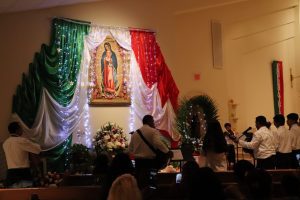
“Our Lady of Guadalupe means so much to me and so many others,” said Valeria Hernandez of St. Elizabeth Seton Parish in Naples. “My mother prayed to the Blessed Virgin when I was sick as a child and she told me to do so every day. I do pray to her all the time and it gives me great comfort. On this Feast Day, in a special way, we all join together to give thanks to Her and to honor Her.”
 For Diego Reyes, of St. Michael Parish in Wauchula, the celebration is “every holiday wrapped into one. Our Lady of Guadalupe is the acceptance of the Hispanic people into the Universal Catholic Church. We were welcomed by the Blessed Virgin Mary with open arms. What an honor and important moment that deserves our prayerful thanks and a true celebration.”
For Diego Reyes, of St. Michael Parish in Wauchula, the celebration is “every holiday wrapped into one. Our Lady of Guadalupe is the acceptance of the Hispanic people into the Universal Catholic Church. We were welcomed by the Blessed Virgin Mary with open arms. What an honor and important moment that deserves our prayerful thanks and a true celebration.”
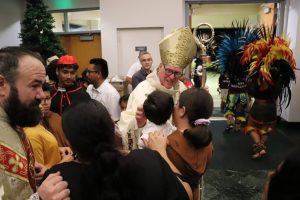
Bishop Frank J. Dewane celebrated the Feast Day Mass at St. Elizabeth Seton Parish, joined by Administrator Father Casey Jones and Parochial Vicar Father Luis Pacheco. Following the Mass, a play depicting the story of the apparition of Our Lady was led by children of the Parish. Afterwards, a local Aztec dancer troupe performed under the church portico.
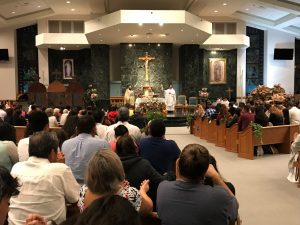 Celebrations took place in many parishes and schools throughout the Diocese. Hundreds took part in rainy procession along U.S. 41 to St. Peter the Apostle Parish in Naples on their way to Mass. At Our Lady of Grace Parish in Avon Park the Mass was followed by an outdoor festival with music, dancing and food. Diocesan Catholic Schools also took time out to celebrate Our Lady by using the moment as a teaching lesson.
Celebrations took place in many parishes and schools throughout the Diocese. Hundreds took part in rainy procession along U.S. 41 to St. Peter the Apostle Parish in Naples on their way to Mass. At Our Lady of Grace Parish in Avon Park the Mass was followed by an outdoor festival with music, dancing and food. Diocesan Catholic Schools also took time out to celebrate Our Lady by using the moment as a teaching lesson.
Other celebrations took place Diocesan Catholic Schools, where students learned about the cultural a rainy procession along U.S. 41 in Naples to St. Peter the Apostle Parish;
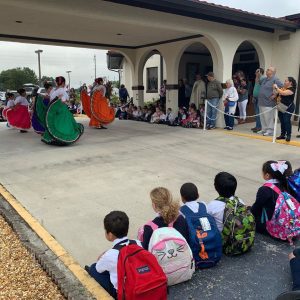
Our Lady appeared, dressed like an Aztec princess, to St. Juan Diego, a poor widower who was on his way to Mass. She asked, in his native language, to have the Bishop of Mexico build a church in Her honor. Skeptical, the Bishop asked for a sign. Our Lady again appeared to St. Juan Diego who shared the request of the Bishop. So, in the middle of winter Our Lady provided beautiful roses to wrap in St. Juan Diego’s tilma, a cloak made of cactus fibers. When he opened the tilma for the Bishop, the roses fell to the floor and an impression of Our Lady appeared on the tilma in the form an indigenous woman.
 This apparition led to the conversion of Mexico almost overnight, when up to that time Catholic missionaries from Europe had made very little headway. The Basilica of Our Lady of Guadalupe in Mexico City was built on the site of the apparitions and is one of the most visited religious shrines in the world. It is also home of the actual tilma of St. Juan Diego, which can still be seen, with the image clearly visible, nearly 500 years later.
This apparition led to the conversion of Mexico almost overnight, when up to that time Catholic missionaries from Europe had made very little headway. The Basilica of Our Lady of Guadalupe in Mexico City was built on the site of the apparitions and is one of the most visited religious shrines in the world. It is also home of the actual tilma of St. Juan Diego, which can still be seen, with the image clearly visible, nearly 500 years later.
